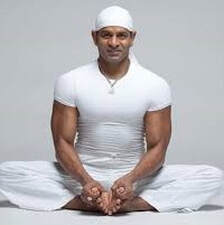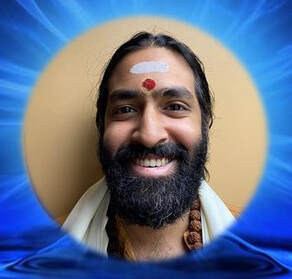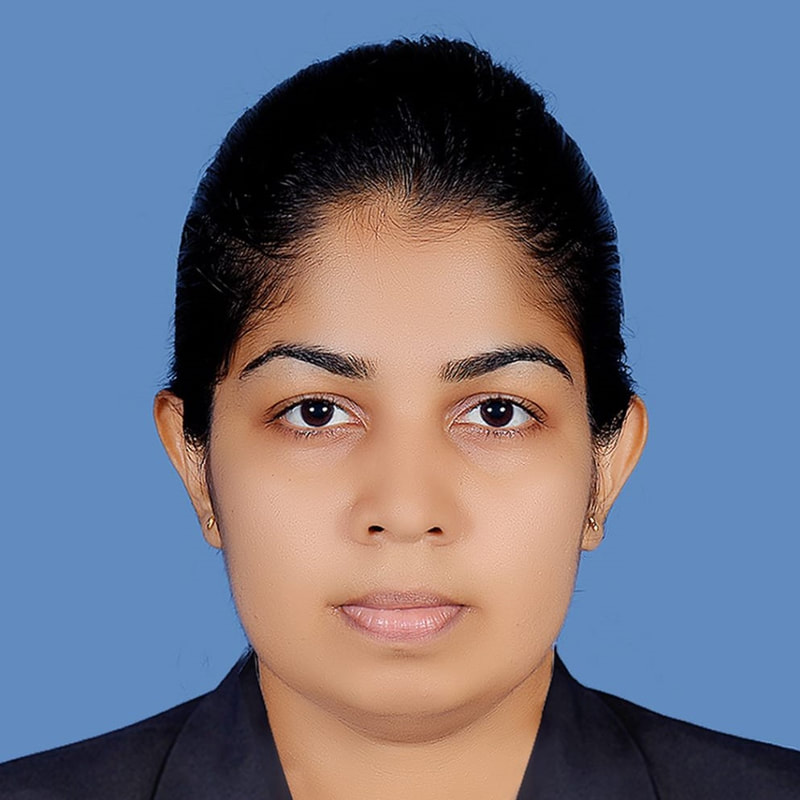- Home
- Shop
- Study Ayurveda
- Conferences
-
Past Conferences
- 61 Conference Ayurveda & Parkinson's Disease
- 60 Conference Ayurveda & Metabolic Disorders
- 59 Conference Ayurveda & Arthritis
- 58 Conference Ayurveda & Allergies
- 57 Conference Child Health Care Through Ayurveda
- 56 Conference Ayurveda for Women
- 55 Conference Ayurveda & Emotions
- 54 Conference Ayurveda & Addictions
- 53 Conference Ayurveda for a Healthy World
- 52 Conference Ayurveda & Eye Care
- 51 Conference Ayurveda & Stress Management
- 50 Conference Ayurveda & Marma Therapy
- 49 Conference Ayurveda & Aroma Therapy
- 48 Conference Ayurveda & Fertility
- 47 Conference Ayurveda for Healthy Living
- 46 Conference Ayurveda & Thyroid Care
- 45 Conference Ayurveda & Kidney Care
- 44 Conference Ayurveda & Heart Care
- 43 Conference Ayurveda & Gut Health
- 42 Conference Ayurveda & Liver Care
- 41 Conference Ayurveda & Lung Care
- 40 Conference Ayurveda & Skin Care
- 39 Conference Ayurveda & Pain Management
- 38 Conference Clinical Ayurveda
- 37 Conference Ayurveda & the Mind
- 36 Conference Ashtanga Ayurveda
- 35 Conference Ayurveda & Epigenetics
- 34 Conference: Evedence Based Ayurveda
- 33 Conference: Ayurvedic Pediatrics
- 32 Conference Ayurveda: Autoimmune & Metabolic Disorders
- 31 Conference AyurYoga for Radiant Health - Cruise
- 30 Conference Ayurveda, Yoga, Spirituality
- 29th Conference Mother & Child Healthcare
- 28 Conference Ayurveda & Panchakarma
- 27 Conference Ayurveda for All
- 26 Conference Ayurveda & Women's Health
- 25 Conference Silver Jubilee
- 24 Conference Kayachikitsa & Panchakarma
- 23 Conference Ayurveda for Health
- 22 Conference Home Remedies
- 21 Conference Ayurveda & Psychology
- 20 Conference Panchanga Veda
- 19 Conference Integrated Medicine
- 18 Conference Herbs & Minerals
- 17 Conference Food & Nutrition
- 16 Conference Shalakya Manthana
- 15 Conference Autoimmune Disorders
- 14 Conference Consciousness
- 13 Conference Energy Medicine
- 12 Conference Spirituality & Healing
- Related
What is Marma?
About the Conference
15.0 PACE (Professional Ayurvedic Continuing Education) Credits from AAPNA (Association of Ayurvedic Professionals of North America, Inc. USA
Ayurveda & Marma Therapy / Marma Yoga
Featured Speakers

Pandit Neil Sahil Parmeswar, Pennsylvania, USA - is a Vedic Pundit and has been studying scripture for many years. He has more than 10 years experience in studying Vedas, Patanjali’s Ashtanga Yoga, and meditation techniques, studying under his gurus. He has also had experience in scriptures from other faiths, including the Bible and the Quran. He performs poojas & yajnas (Vedic prayer ceremonies) and teaches Vedas, mantra recitation, and yoga (as revealed by the ancient sages).
Topic: Mantra Yoga for Marma Therapy
Abstract: Mantra Yoga is a powerful tool for Marma Therapy. The ancient science of Mantra Yoga and Mantra Purusha is a lost part of modern Ayurveda and Yoga. The practice of mantra has many physical, mental, and spiritual healing benefits.
Topic: Mantra Yoga for Marma Therapy
Abstract: Mantra Yoga is a powerful tool for Marma Therapy. The ancient science of Mantra Yoga and Mantra Purusha is a lost part of modern Ayurveda and Yoga. The practice of mantra has many physical, mental, and spiritual healing benefits.

Shekhar Annambhotla, BAMS, MD-Ayu, RAD, RDAM, ERYT-500, LMT, FAAPNA, Pennsylvania, USA - who was trained in India and has been practicing and teaching ayurveda worldwide since 1988. Ayurveda is not just a system of alternative system of healing, but is actually a comprehensive and ancient science of health. It is Shekhar’s belief that due to the open nature of ayurveda and its timeless principles, it is a boon to those of us living in the modern, stressful world. Shekhar’s mission is to educate and help people live healthier lives with Ayurveda. Shekhar has the opportunity to serve at Maharishi Vedic Schools and Universities in The Netherlands, Austria, Hungary, Italy, Germany, France, Switzerland, Great Britain, Ireland, Portugal, Spain, Belgium, Trinidad, Guadeloupe, Jamaica (Caribbean Island), Colombia (South America), Peru, Costa Rica, Canada, Mexico and the U.S.A. He has taught ayurveda courses in many prestigious universities in the United States including University of Pennsylvania (UPENN), University of Medicine & Dentistry in NJ (UMDNJ), Hershey Medical School, Jefferson Medical School, University of Penn Nursing School, and others.
Topic: Healing the Marmas to improve health
Abstract:
Topic: Healing the Marmas to improve health
Abstract:

Rashi Sharma, BAMS, MD-Ayu, PhD-Ayu, Banaras, India - working as Associate Professor in Department of Kriya Sharir, Faculty of Ayurveda IMS BHU Varanasi Uttar Pradesh I have authored text books based on Ayurveda curriculum for Graduates and Post Graduate scholars .I have been a renowned speaker in International and National scientific conference. I have received various awards from different organizations.
Topic: Quick benefits and Importance of marma in Ayurveda
Abstract: Marma in Ayurveda means important sites or points in our body which are essentially to be saved from external agents. There are different types of marma described in Ayurveda based on their location and vitality. However, the total number of marma described in sushrut samhita is 107. Depending upon the type of marma,any trauma can cause a permanent disability and even death may occur.
Topic: Quick benefits and Importance of marma in Ayurveda
Abstract: Marma in Ayurveda means important sites or points in our body which are essentially to be saved from external agents. There are different types of marma described in Ayurveda based on their location and vitality. However, the total number of marma described in sushrut samhita is 107. Depending upon the type of marma,any trauma can cause a permanent disability and even death may occur.

Jayashree Patil, BAMS, MD-Ayu, Maharashtra, India - Practicing Gynaecology Obstetrics last 30 years. H. O. D. and Professor at Dr D. Y. Patil College of Ayurved, Pimpri, Pune, India. Operated cases & labors. Marma are studied accordingly.
Topic: Important marma in Gynaecology
Abstract: Obstetrics and Gynaecology clinical practice always related to important Marmas. We should avoid injuries to marmas while surgeries and labor. It makes us perfect. And saves precious points in female body. It also deals with through knowledge of female anatomy with 8 marmas in female other than male.
Topic: Important marma in Gynaecology
Abstract: Obstetrics and Gynaecology clinical practice always related to important Marmas. We should avoid injuries to marmas while surgeries and labor. It makes us perfect. And saves precious points in female body. It also deals with through knowledge of female anatomy with 8 marmas in female other than male.

Jyothi Shamith, BAMS, MD-Ayu, PhD-Ayu-Scholar, Kerala, India - Have completed MD Rachana shareera from SDM College of Ayurveda ,completed Msc in Yoga, Msc in clinical Nutrition from Kerala University. Presently working as Professor in Rachana shareera PNPS Ayurved medical College. Having 11 years of teaching experience,
Having the 15 years of clinical experience. Running Panchakarma center since 15 years. PhD scholar at Parul University ,Gujarat, India
Topic: Marma chikitsa in clinical practice
Abstract: Marma is the vital structure ,which is to be protected from injury, any injury occurs to marma point is difficult to heal, There are 107 marma in the body. concept of marma has to be applied in treatment.
Having the 15 years of clinical experience. Running Panchakarma center since 15 years. PhD scholar at Parul University ,Gujarat, India
Topic: Marma chikitsa in clinical practice
Abstract: Marma is the vital structure ,which is to be protected from injury, any injury occurs to marma point is difficult to heal, There are 107 marma in the body. concept of marma has to be applied in treatment.

Charitha Muthukuda, BAMS, Sri Lanka - a graduate of Ayurveda Medicine and Surgery (BAMS), currently working as a lecturer at the Department of Swasthavritta and Yoga, Institute of Indigenous Medicine (IIM), University of Colombo, Sri Lanka. Related fields are Swasthavritta (Ayurveda Community Medicine), Agada Tantra (Ayurveda Toxicology), Yoga, Ayurveda Beauty Culture and Massage Therapy.
Topic: Comparison of facial Marma massage and Dashanga Lepa in the treatment of Acne vulgaris- A Pilot Study.
Abstract: Acne vulgaris, a common skin problem that affects almost 85% of teenagers, mostly occurs on the face and sometimes on chest and upper back too. This condition resembles Yauvana pidika described in Ayurveda under the Kshudra roga. Aim: The aim of this study was to compare the effect of Dashanga Lepa local application and facial Marma massage on Acne vulgaris. Methodology: A total of 30 diagnosed patients were randomly allocated to three groups equally. All the patients were clinically assessed and diagnosed on the basis of a thorough history and dermatological examination. Group I was treated with local application of Dashanga Lepa powder, Group II with facial Marma massage of Phana, Apanga, Vidura, Sankha, Utkshepa, Avartha, Shringataka, Sthapani Marma points, and Group III with both procedures. All the groups were treated once a day at the clinic for two weeks. The result was assessed on the basis of a specially prepared proforma and scoring pattern designed for each symptom. Results: Group III (combined treatment) was the most effective treatment group. Group I showed better improvement in comparison to Group II. Conclusion: Combined treatment of Dashanga lepa with facial Marma massage is more effective for Acne vulgaris. Key words- Acne vulgaris, Yauvanapidika, facial Marma massage, Dashanga Lepa
Topic: Comparison of facial Marma massage and Dashanga Lepa in the treatment of Acne vulgaris- A Pilot Study.
Abstract: Acne vulgaris, a common skin problem that affects almost 85% of teenagers, mostly occurs on the face and sometimes on chest and upper back too. This condition resembles Yauvana pidika described in Ayurveda under the Kshudra roga. Aim: The aim of this study was to compare the effect of Dashanga Lepa local application and facial Marma massage on Acne vulgaris. Methodology: A total of 30 diagnosed patients were randomly allocated to three groups equally. All the patients were clinically assessed and diagnosed on the basis of a thorough history and dermatological examination. Group I was treated with local application of Dashanga Lepa powder, Group II with facial Marma massage of Phana, Apanga, Vidura, Sankha, Utkshepa, Avartha, Shringataka, Sthapani Marma points, and Group III with both procedures. All the groups were treated once a day at the clinic for two weeks. The result was assessed on the basis of a specially prepared proforma and scoring pattern designed for each symptom. Results: Group III (combined treatment) was the most effective treatment group. Group I showed better improvement in comparison to Group II. Conclusion: Combined treatment of Dashanga lepa with facial Marma massage is more effective for Acne vulgaris. Key words- Acne vulgaris, Yauvanapidika, facial Marma massage, Dashanga Lepa
Privacy Policy |
© COPYRIGHT 2018. ALL RIGHTS RESERVED.
|
Informed Consent & Disclaimer: Information on this web site is provided for informational and educational purposes only and is not intended as a substitute for the advice provided by your physician or other healthcare professional or any information contained on or in any product label or packaging. Do not use the information on this web site for diagnosing or treating a health problem or disease, or prescribing medication or other treatment. Always speak with your physician or other healthcare professional regarding any health concerns and before taking any medication or nutritional, herbal or homeopathic supplement, or using any treatment for a health problem. Information and statements regarding dietary supplements have not been evaluated by the Food and Drug Administration and are not intended to diagnose, treat, cure, or prevent any disease.
- Home
- Shop
- Study Ayurveda
- Conferences
-
Past Conferences
- 61 Conference Ayurveda & Parkinson's Disease
- 60 Conference Ayurveda & Metabolic Disorders
- 59 Conference Ayurveda & Arthritis
- 58 Conference Ayurveda & Allergies
- 57 Conference Child Health Care Through Ayurveda
- 56 Conference Ayurveda for Women
- 55 Conference Ayurveda & Emotions
- 54 Conference Ayurveda & Addictions
- 53 Conference Ayurveda for a Healthy World
- 52 Conference Ayurveda & Eye Care
- 51 Conference Ayurveda & Stress Management
- 50 Conference Ayurveda & Marma Therapy
- 49 Conference Ayurveda & Aroma Therapy
- 48 Conference Ayurveda & Fertility
- 47 Conference Ayurveda for Healthy Living
- 46 Conference Ayurveda & Thyroid Care
- 45 Conference Ayurveda & Kidney Care
- 44 Conference Ayurveda & Heart Care
- 43 Conference Ayurveda & Gut Health
- 42 Conference Ayurveda & Liver Care
- 41 Conference Ayurveda & Lung Care
- 40 Conference Ayurveda & Skin Care
- 39 Conference Ayurveda & Pain Management
- 38 Conference Clinical Ayurveda
- 37 Conference Ayurveda & the Mind
- 36 Conference Ashtanga Ayurveda
- 35 Conference Ayurveda & Epigenetics
- 34 Conference: Evedence Based Ayurveda
- 33 Conference: Ayurvedic Pediatrics
- 32 Conference Ayurveda: Autoimmune & Metabolic Disorders
- 31 Conference AyurYoga for Radiant Health - Cruise
- 30 Conference Ayurveda, Yoga, Spirituality
- 29th Conference Mother & Child Healthcare
- 28 Conference Ayurveda & Panchakarma
- 27 Conference Ayurveda for All
- 26 Conference Ayurveda & Women's Health
- 25 Conference Silver Jubilee
- 24 Conference Kayachikitsa & Panchakarma
- 23 Conference Ayurveda for Health
- 22 Conference Home Remedies
- 21 Conference Ayurveda & Psychology
- 20 Conference Panchanga Veda
- 19 Conference Integrated Medicine
- 18 Conference Herbs & Minerals
- 17 Conference Food & Nutrition
- 16 Conference Shalakya Manthana
- 15 Conference Autoimmune Disorders
- 14 Conference Consciousness
- 13 Conference Energy Medicine
- 12 Conference Spirituality & Healing
- Related













